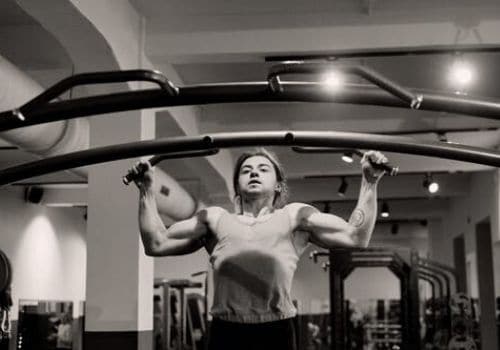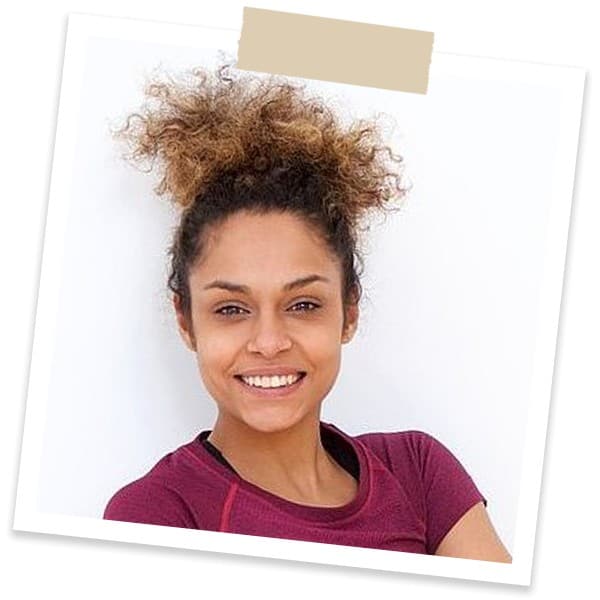Have you been spending quality time at the gym and seen no progress in either muscle growth or strength? If you are struggling with mass gain, you need to understand which muscles groups to work together to see results fast.
Most trainees focus their efforts on particular muscles of the body such as the triceps, abs or the chest and ignore all the rest. However, such an exercise only drains the trainee’s energy, overloads his or her nervous system and ends up without the results he or she would have wished.
Our Top Home Fitness Picks: A Quick Look
If you are in a hurry – here is a quick look of the best home fitness machines on the market. Here are my top picks:
2. NordicTrack Commercial 2450 Treadmill
3. Teeter FreeStep – Recumbent Elliptical
Click on the links below to find out which fitness machine is the best for your needs.

Muscles do not function on their own; various smaller muscles support the larger muscle groups of the body. In a regular activity, each part of the body plays a role in enhancing the smooth moment of anything like the arm, leg or even the head.
Therefore, if you are looking forward to strengthen the large muscles, you also need to think of the smaller ones. You will only develop a strong core if you are able to work out both small and large muscles.
Here is an example, if you for a workout such as a chest press or a shoulder press using dumbbells, you will be working the bigger muscles (the chest and shoulders) and smaller muscles (triceps).
Most professional trainers have now understood this concept and plan how to work out each type of muscles on its own in a split program. Most of these programs allow you to group similar muscles together if there is limited time or split major muscles so that you are able to get more time to work on the smaller ones.
The Six Main Muscle Groups to Work Together
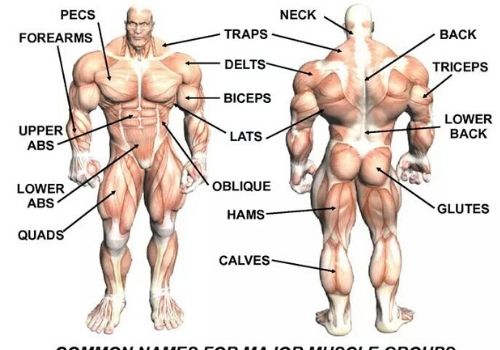
By the term ‘muscle groups’ we mean a group of muscles that are located close together so that they enable your body to perform certain movements. There are many muscle groups. However, for the sake of workouts to build muscle, we will be looking at the following muscle groups.
- Back
- Chest
- Arms
- Legs
- Shoulders
- Calves
When you categorize muscles into different units, it becomes easier to prioritize areas that require more effort in your workout schedule.
Here is an example, if you are looking to grow more muscle mass on your upper body, you may need to train upper muscle groups more often than lower muscle groups. Unfortunately, most full body workouts do not differentiate different muscle groups and often do not meet the user’s training needs.
Here is a quick look at these large muscle groups
Muscle Group 1: Pec Muscles
The largest muscle on your chest is called pectoralis or pec. Its main function is to bring the upper arms together across your body. Unlike other muscle groups, you will learn in this article, chest muscle fibers are not aligned in a similar direction.
This is because there several areas where the muscle attach to the skeletal frame. Some attach to the rib cage while other attach to the collarbone. Knowing how your muscles are aligned and where they attach is vital is selecting the best method to train them.
Muscle Group 2: The Back
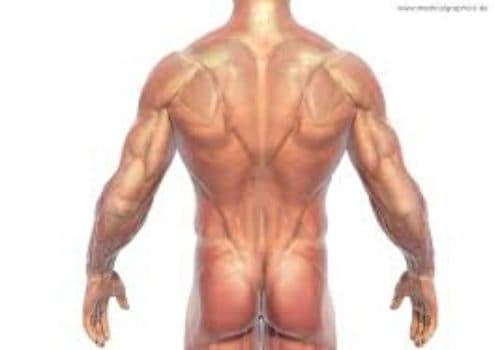
Four muscles make up much of your back that need developing. They include erector spinae, trapezius, rhomboids and latissimus dorsi.
Trapezius attach to the back of the shoulder while lattissimus dorsi attach to the lumbar region of the body the rest are between these two large groups. There are smaller sets of muscles beneath these four muscles that are key to building strength in your core.
They include the lats and a trap muscles. Traps connect your shoulder blades to your spine and the spine erectors run parallel to your spine column to keep it stabilized.
The goal of developing this muscle group should to have large traps but not too overdeveloped in expense of the lumbar muscle groups. You should also focus on growing wide lats that extend to your torso and creating that v-tapering physique. Finally, the lower back should have a thick Christmas tree structure.
Unfortunately, most people do not take too much attention on the back muscle as it not part of the ‘mirror’ physique that most of their admirers will sea.
However, a wide back is vital for a strong core and moving from good to exception in your muscle-building plan. A quick tip, you can work your back, arm and leg muscles using a hybrid machine.
Muscle Group 3: The Arms
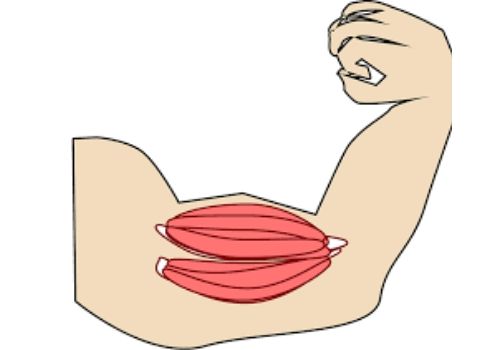
Arms have four different muscle groups that include triceps, forearms, biceps and Brachialis. The most common muscle group with body builders is the biceps on the front of their arms.
However, there is the brachialis, a smaller muscle group that is located beneath the biceps and is key to flexing the elbow. If you do not develop it, you fail to get enough power for pull and push exercise.
The muscle is what looks like a knot that separates the triceps from biceps when the bodybuilders flex their muscles.
The biceps are used for bringing the forearm to the upper arm while the triceps do the exact opposite, push the forearm so that that the hand stretches. Remember this when exercising your arms.
The lifting process is as important as returning the weight to its original position. If you are too quick to return the weight to the former position, you may not be working your triceps as they should or may cause them to tear due to the force that you apply to push the forearm.
Most trainees target the biceps in their workouts. However, the biceps contribute less than the triceps in increasing the size of the arm. If you do not workout triceps as hard as the biceps, you end up having small, disproportionate arms despite having huge biceps.
Lastly, the forearm has several small muscles that forms what looks like the calves like the legs. They are usually hidden in the tendons and help in flexing everything from the wrist to the fingers.
You need to develop them to enhance the appearance of your limbs and increase the strength of the same. You can work your biceps using bicep push ups
Muscle Group 4: Shoulders
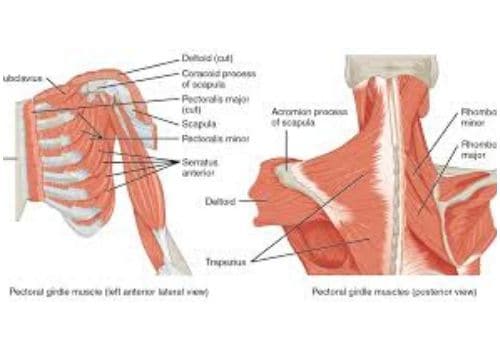
There are three main muscles that cover the shoulder region. They are also known as the deltoids. The anterior deltoid muscles are located at the front of the muscle blades while lateral ones are at the back and posterior ones are near the armpits.
The posterior muscles work with the lats (discussed in the back muscles) to bring arm behind the body while the anterior ones work with the pecs to help you move the upper arm. The middle muscle works with your upper back and neck muscles to enable side movements of the arm.
All the three muscles need to be trained and developed for you to have stronger arms. The angle of your presses and pulls determine which muscles are being trained.
This is why we advise that you keep changing the angle of your press and lifts so that you reach the rear muscles. An overhead press works the anterior muscles while the barbell row will work out the rear muscles well.
You need to keep checking the rear and middle muscles as the anterior ones get a good workout when you are working your chest muscles.
Muscle Group 5: Legs
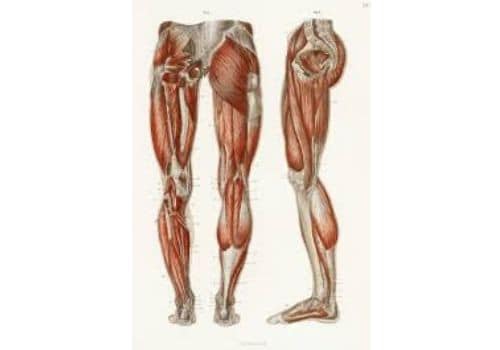
Your legs are made of three major muscles namely the glutes, hamstrings and quadriceps. You will notice that calves are not included in this list. While they are a part of the legs, they require a different type of workout compared to the rest of the leg muscles.
Unfortunately, each of these muscles require its own training method as each has its own way of being conditioned. Here is a quick look at each.
- The quads
The quads are a set of four large muscles that are located in the front of your legs. Three of the muscles are called vastus (and the location of the muscle whether front middle or back) and rectus femoris. The work of these muscles is to allow you to flex your hips and extend your knees.
Your quad exercises should be enhancing the movement of your hips from a flexed position to an extended one and back (as if you are bending a joint). When developed, these muscles form the centrepiece of your legs.
Most popular exercises for people who are looking to develop their quads are heavy back squat exercises which you can do with a squat bench.
However, you also need to incorporate the lunges and front squats so that you work on literally and mid hip muscles optimally.
- Hamstrings
The hamstrings are made up of three muscle groups that are located at the back of the legs. They include biceps femoris, semimembranosus and semitendinosus.
These muscles look like they are woven together and perform a curl when you are flexing your knees. The biceps are split on one end like those of your arms so that they attach to different sections of the leg bone.
Unfortunately, most people neglect the hamstrings when doing their workouts. Instead, most of the people focus on the quads because they are large and are seen from the back.
However, if you do not work the quads, you will have an imbalance of muscle such that one side of your legs looks less developed. You also risk injury when working out your quads. To work you hamstrings combine leg curls with squats and other lower exercises in a session.
- The Glutes
The glutes are three muscles that form the butt. These muscles are more than showing off. They are key to stabilizing your body when doing high intensity exercises.
The force that you require for squat and deadlift exercises comes from them. Fortunately, if you are doing your lower body exercises well, you do not need additional workouts targeting this area.
Muscle Group 6: The Calves
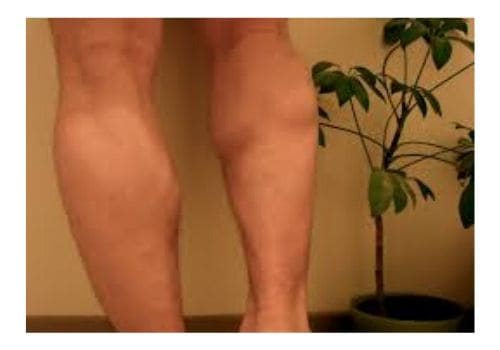
Your calves are made of two muscles, the soleus and gastrocnemius. The gastrocnemius are tat larger muscles of the two and are what you see when you look at your calves.
However, the soleus lies deep within the larger muscle and attaches to the femur bones. When flexing your ankles, both muscles work together. However, the gastrocnemius is also involved in flexing your knee.
Proper calve workouts should be able to develop both muscles together. There are only two best exercises that include; calf raising where you raise and lower your legs against the gravity and back. The second exercise is calf pressing where you press your toes against a resistance.
You can do variations of the two while standing or seated using any of these best seated calf raise machines. You do standing raises while stretching your legs and mostly work on the gastrocnemius. On the other hand, you do the sitting presses while bending your knees thereby working on the soleus.
The Core
The core was not included in the list of the group muscles listed in the six. This is because they do not do a lot of flexing but support the frame. However, they are as important as any other muscles.
They are located in your midsection around the abdomen and your obliques. You use the muscles to stabilise your spine and to flex it when doing various exercises.
While you could classify the core as one of the large muscle groups in your body, it is not necessary of you are working on the rest of the six muscle groups as you should.
In heavy compound exercises, the core receives as much training as any other muscle and therefore does not require a separate workout plan.
That does not mean that you should never do direct training on the core. Most workout plans show you how to work your abs at the end of the program.
You should not be worried about it because it will naturally get into shape as you work on other areas. You are do not need a direct workout on this area to have a six-pack.
What Muscle Groups to Work Out Together?
Now that you understand various muscle groups and their work in the body, you now need to determine muscle groups to work out together.
It is not as easy as it sounds, as most workout programs require you to pair different muscles groups in a single session. In addition, secondary muscles are used when working out various primary ones.
One of the key areas that you need to check when grouping your muscles is to know how long it takes different muscles to recover after an intense workout.
The recovery time depends on the diet, training and sleep. In most cases, it takes between 72 and 96 hours for muscle groups to recover. It may take longer for some people. However, the recovery period does not take shorter than 48 hours even if the bodybuilder is a resistance trained regular trainer.
With that in mind, most health expert recommend training specific muscle groups once every five to seven days. Your workout plan should look at ways to touch each of the six-muscle group at least once in a week.
If you are a doing a heavy, compound exercise such as the barbell exercises, this can be a little challenges as you are hitting several muscles at once. Most heavy bodybuilder end up overdoing it when they workout hard on specific muscles using complex exercises. To avoid that, you need to come up with a plan and stick to it in your workouts.
Here are some muscle groups in some of the popular split workout plans. This is best-case scenario; you may decide to alter it to meet your needs.
5-day Workout Plan
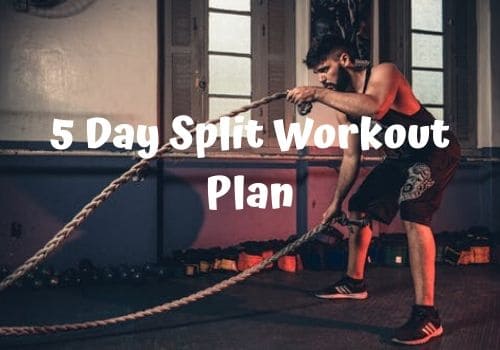
- Day 1: Push (chest)
- Day 2: Calves and pulls
- Day 3: Arms
- Day 4: Shoulders
- Day 5: Legs and abs
Each exercise should take about 45 minutes so that you give each muscle group maximum stimulation. This program gives your muscles enough time to recover and you get your time off before the weekends.
If you have weak points, you can add extra sets on the weak areas. If you find a continuous 5-day split workout program being too hard for you, you may include rest days after every few days.
In this workout plan, you will find that you will work out your arms during push exercises but with a day between the two exercises, you will still be strong enough to do some intense work exercises. If you decide to alter the order, keep in mind the workout combinations that apply in each case.
What Muscle Groups to Train In A 4-Day Split Workout?
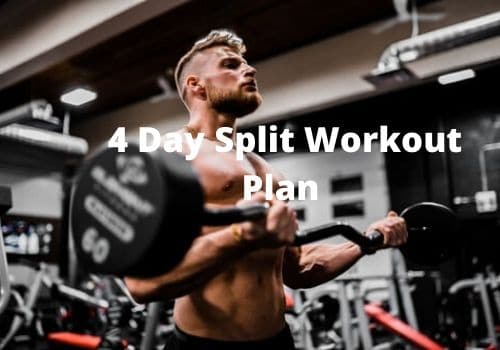
A workout program is a little different from the 5 day one discussed above as some combinations are supposed to be made. To get the best results, work out those muscles that function together as discussed in the section above. Here is a sample workout plan
- Day 1: Back and biceps
- Day 2: Chest and triceps
- Day 3: Hamstrings, quads and calves
- Day 4: Shoulders, traps and forearms
If you are still not able to train for four days in a week, you can combine different muscles in a three-day workout. So that you are able to remember what muscles work together in each exercise, simplify your routine to pull, push and the legs
- Day 1: Push
- Day 2: Pull
- Day 3: Legs and shoulders
As discussed in the section above, you shoulder muscles require some extra care and may not be fully stimulated with chest push exercises. That is the reason why they need some extra workout on the last day of the three-day training program.
Compound exercises for different muscle groups
There are two types of weightlifting exercises that include isolation exercises and compound exercises. Isolation exercises work on singular muscle groups like those that we have discussed in the area above.
Some of the popular isolation exercises include the cable flyers, biceps curl and side lateral raise exercises. These exercises do not require significant whole-body effort and strength.
On the other hand, compound exercises involve workout combinations that target large muscle groups and require the effort from your whole body. Some of the popular compound exercises include deadlift, squat, military press and bench presses.
If you want to work out weak points in your body, then the isolation exercises are what you should consider. On the other hand, if you are building general muscle and strength, you should go for compound exercises.
The reason why compound exercises are recommended is that you are able to train more muscle groups with each rep. Therefore, your workouts become more efficient. You can also use more weight in your workouts, therefore, you expose the muscle to greater mechanical tension, which in turn leads to greater muscle growth.
Here are exercise combinations for specific muscles that work together
Chest and Shoulder Muscles
- Dip (Chest variation)
- Flat Dumbbell bench press
- Incline Dumbbell Bench Press
- Incline Barbell bench press
Best Compound Back Exercises
- Barbell row
- Barbell deadlift
- One-arm barbell row
- T-bar row
- Pull up
- Chin up
Best Compound Biceps Exercise
- Barbell curl
- Dumbbell curl
- E-Z bar curl
- Hammer curl
Legs and Calf exercises
- Barbell Squat
- Front Squat that work abs
- Hack Squat (sled, not barbell)
- Single Leg Split Squat (Barbell or Dumbbell)
- Dumbbell Lunge
- Romanian Deadlift
- Leg Press
- Barbell Lunge (Walking or In Place)
- Leg Curl (Lying or Seated)
For calves go with the following
- Standing Calf Raise
- Calf Press on the Leg Press
- Donkey Calf Raise
- Seated Calf Raise
Final Thoughts
You will find several theories of the Muscle group workouts on the internet. We do not discredit any of the plans. However, you should check if they fall in the principles discussed below.
- Each muscle should be trained every five to seven days so that it has enough time to recover
- Always go for the best exercises to train each muscle group that you are working on
- Always combine muscle groups that work together for movement
- Remember small muscles when selecting the exercises on major muscle groups
We recommend compound exercises where possible. This is because they help you hit more than one muscle group at a given time and speed up the realization of your fitness goals.
Finally, remember commitment and discipline are key to the success of any program. Read, learn and practice what is good for your body. You make several adjustments as your body responds but ensure you follow the main principles of your regime.
There you have it ladies and gentlemen, the best muscle groups to work together. Keep grinding!
Written by Alisha Wishart – TheHealthPot.com
Certified Personal Trainer (CPT), Writer and Contributor
Alisha, is a Mother, Wife and Certified Personal Trainer (CPT). She understands how demanding everyday life can be and takes great pride in working with individuals and groups to help them achieve their desired fitness goals. Read more about Alisha here.

